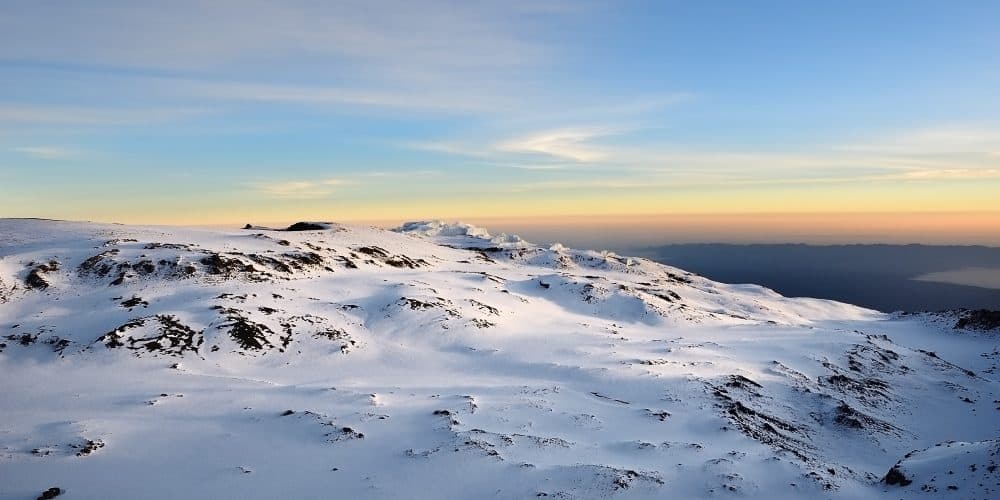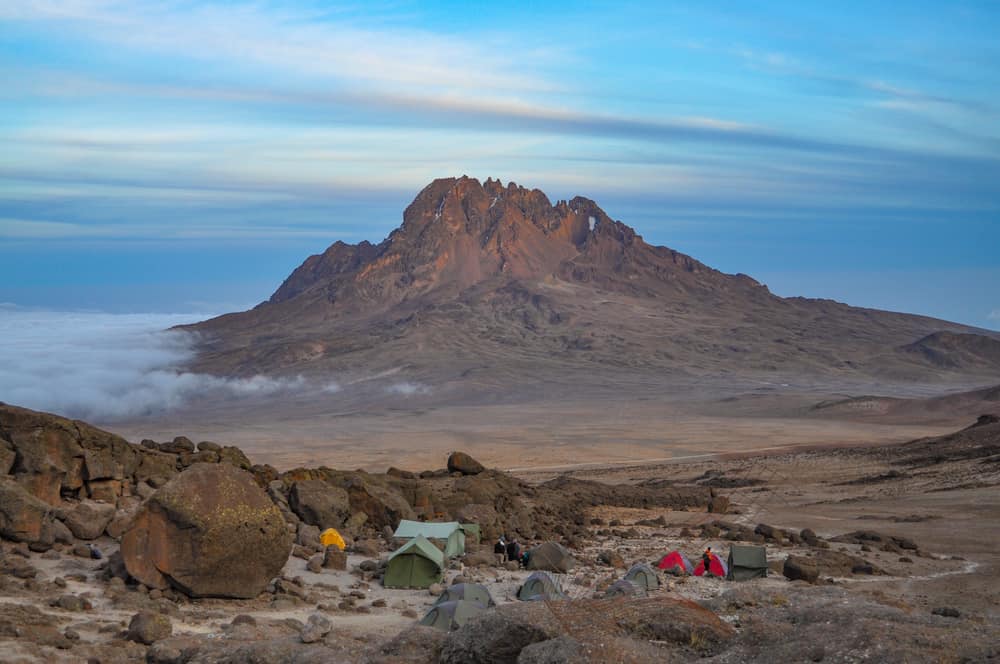
African Scenery group climbs are usually filled to capacity, 16 participants in total.
On any given climb, most if not all of the 16 team members will make it to the top without issue. However, it is pretty common that one or two people may not be able to reach the summit for one reason or another. This can be due to altitude sickness, exhaustion, foot problems, cold, or a variety of other matters.
The same summit success rate holds true for private parties. However, since private parties are usually smaller, typically comprised of two to six participants, it’s far less likely that more than one person on the team would not make it to Uhuru Point.
We often get asked what happens to the rest of the trekking party when someone in the group needs to turn around. Specifically, people ask whether the entire group must stop their climb if another member of the party can’t continue.
The answer is absolutely not!
The group continues on the route itinerary even if others need to turn around.

High Guide to Client Ratio
Each climb we lead is fully supported. That means we have a large crew that takes care of the clients at all times on the mountain. Each group will have a lead guide, a number of assistant guides, cooks, and porters, depending on the party size.
This level of support means our clients receive plenty of attention which in turn leads to a safer and more successful experience. But it also means that we have the manpower required to manage the climbers separately if the situation calls for it.
For instance, faster and slower trekkers can walk at different paces if our guides deem it reasonable. This comes into play on summit night more so than on the standard day hikes. On day hikes, our guides keep a slow pace on purpose for better acclimatization, so resist the urge to rush ahead.
But what if a climber needs to descend? If someone needs to come down, one of team’s guides will descend with the client, accompanied by porters too if necessary. The lead guide takes the group to the next destination. The remaining party is unaffected and continues their climb as scheduled.
Our Robust Summit Staff
When we depart for the summit, our typical protocol is to have one staff member per two clients, or more.
In addition to our guides, we have special “summit porters” who assist our guides on the final ascent. Summit porters are typically the strongest and most skilled of the porter team, who also can speak basic English (summit porters are paid a bonus to go to the top, but consider giving him an extra tip for his effort if he was particularly helpful to you).
All of our summit crew members are capable of aiding our clients, whether it is simply offering some encouragement, giving clients snacks and hot drinks, helping clients put on or take off clothing, offering a hand on tricky terrain, or carrying your daypack. These might be little things, but they add up. When you’re tired, the thought of digging in your pack and opening up a snack can sound like a monumental task.
Not all companies are able to provide this degree of support because they do not have the same number of staff. Our high guide to climber ratio is standard for only the top Kilimanjaro operators. For African scenery®, it’s just another way we go the extra mile to make your Kilimanjaro experience the best it can be.
Our lead guide, assistant guides and summit porters can all bring climbers down early. Those who turn around due to exhaustion can rest at high camp and join their group on the way down. If illness or injury are involved, then the climber may be taken off the mountain entirely to rest at sea level or taken in for medical treatment.
Failing to Summit
Sometimes a successful summit isn’t in the cards. The challenge is what makes it worth doing.
Safety is always our first priority. So when you or your guides decide it is time to stop climbing, don’t be too disappointed. The most important thing is that you go home to your loved ones in good health. Pushing on when your body clearly isn’t capable is dangerous and what causes most of the fatalities in the industry. A lot of factors contribute to a successful climb and just because you didn’t make it this time doesn’t mean you can’t make it another time, perhaps with some adjustments to the route, training, gear, food, sleep, etc.
So don’t be too hard on yourself. The mountain is not going anywhere.


